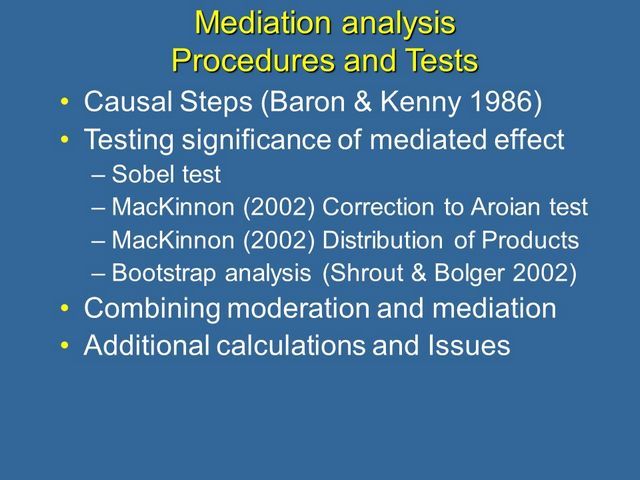So how do we go about doing a mediation analysis? In the next four posts I'll take you through the main approaches to testing for a significant mediation effect.
We'll first look at the Causal Steps approach, made famous by Baron & Kenny (1986).
Then we'll look at several modern approaches for testing the significance of a mediated effect.
These are the Sobel test, MacKinnon's (2002) Correction to Aroian test, MacKinnon's (2002) Distribution of Products, and finally Bootstrap analysis (Shrout & Bolger 2002).
We'll also discuss which test is best to use.
NEXT: 7. Causal Steps to Establish Mediation: Step 1
Statistics Training: Introduction to Path Analysis
- 9. Causal Steps to Establish Mediation: Steps 3 & 4
- 8. Causal Steps to Establish Mediation: Step 2
- 7. Causal Steps to Establish Mediation: Step 1
- 6. Mediation Analysis: Procedures and Tests
- 5. Example of a Basic Test of Mediation
- 4. Example of the Difference between Moderation and Mediation
- 3. Moderation and Mediation Explained
- 2. A Quick Review of Regression
- 13. Sobel's Test of Significant Mediation
- 12. Testing for Significant Mediation
- 11. An Example of a Mediator Acting as a Suppressor
- 10. Barron and Kenny (1986) Criteria for Mediation
- 1. What is Path Analysis?


